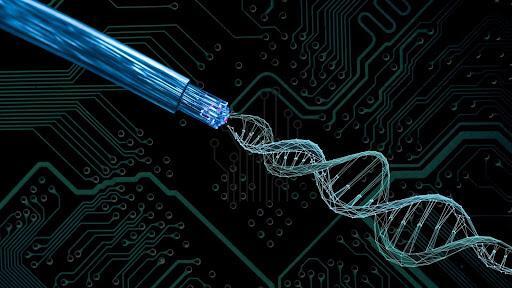
DNA’s Electron Flow May Unlock Future Biocompatible Electronics
In a groundbreaking discovery, researchers have uncovered the secrets of DNA’s electron flow, revealing novel pathways for electron transport through interactions between electrons and molecular vibrations, or phonons. This breakthrough has significant implications for the development of biocompatible electronics, paving the way for smaller, more efficient, and more sustainable devices.
For decades, scientists have been fascinated by the incredible properties of DNA, the molecule that contains the genetic instructions for life. However, its electrical properties have remained largely unexplored until recently. Researchers have been studying the movement of electrons through DNA strands, seeking to understand how they interact with the molecule’s chemical structure. The findings of this research have far-reaching implications for the development of innovative electronic devices.
Electron transport in DNA
The study of electron transport in DNA is a complex and multidisciplinary field, requiring expertise in physics, chemistry, and biology. Researchers have been using a variety of techniques, including spectroscopy and microscopy, to investigate the movement of electrons through DNA strands. The results of these studies have revealed a fascinating phenomenon: the electrons flowing through DNA strands do not follow the classical rules of transport.
In traditional electronics, electrons move through a material by jumping from one atom to another, a process known as hopping. However, in DNA, the electrons appear to move through the molecule by interacting with the molecular vibrations, or phonons. This unique mechanism of electron transport is known as phonon-assisted transport.
Phonon-assisted transport
Phonons are quantized packets of energy that represent the vibrational modes of a molecule. In DNA, the phonons are generated by the molecule’s chemical structure, which is made up of alternating sugar and phosphate molecules. These vibrations create a “skeleton” of energy that can be harnessed by the electrons flowing through the molecule.
The researchers found that the electrons interact with the phonons in a way that creates novel pathways for transport. This interaction allows the electrons to move through the DNA molecule with greater ease and efficiency than would be expected in traditional electronics.
Implications for biocompatible electronics
The discovery of phonon-assisted transport in DNA has significant implications for the development of biocompatible electronics. Traditional electronic devices are made from materials such as silicon and copper, which are not biocompatible. In contrast, DNA is a biocompatible material that can be used to create devices that are safer and more sustainable.
The use of DNA in electronics could lead to the development of smaller, more efficient devices that are better suited to the human body. For example, DNA-based electronics could be used to create implantable devices that can monitor vital signs, deliver medication, or even repair damaged tissues.
Future research directions
The study of electron transport in DNA is still in its early stages, and there are many avenues for future research. One of the most promising areas of investigation is the development of DNA-based transistors. These devices would use DNA molecules as the active material, allowing for the creation of smaller, more efficient electronic devices.
Another area of research is the development of DNA-based sensors. These devices could be used to detect a wide range of biomarkers, including genetic mutations, proteins, and small molecules. This could have significant implications for the diagnosis and treatment of diseases.
Conclusion
The discovery of phonon-assisted transport in DNA has significant implications for the development of biocompatible electronics. The use of DNA as a building block for electronic devices could lead to the creation of smaller, more efficient, and more sustainable devices. As researchers continue to explore the electrical properties of DNA, we can expect to see a wide range of innovative applications emerge.






